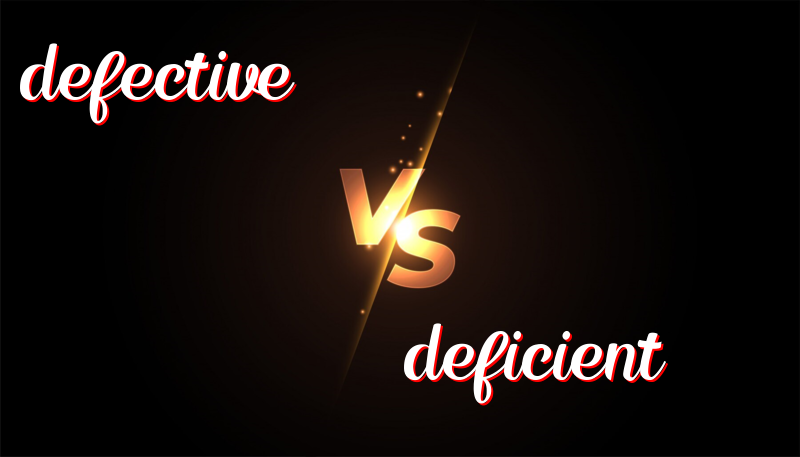Understanding the Difference Between Defective and Deficient
The Difference Between “Defective” and “Deficient”
Defective and deficient are two words that describe things that are not working properly or are missing something. Let’s explore the meaning of these words and how they differ from each other.
Defective
Defective is used to describe something that is broken or flawed in some way. It means the item is not working as it should be. Here are some examples:
1. The toy was defective and wouldn’t turn on.
2. The phone screen was cracked, making it defective.
3. The car had a defective engine that needed repair.
4. The clock was defective, showing the wrong time.
5. The watch was defective, with its hands not moving.
Deficient
Deficient is used to describe something that lacks what is needed or expected. It means the item is missing something essential. Here are some examples:
1. The recipe was deficient in salt, so it tasted bland.
2. The student was deficient in math skills and needed extra help.
3. The plant was deficient in sunlight, causing it to wither.
4. The report was deficient in details and needed more information.
5. The diet was deficient in vitamins, leading to health problems.
Trick to Remember the Difference
To remember the difference between defective and deficient, think of the “D” in defective as standing for “damaged” or “broken,” while the “D” in deficient can stand for “depleted” or “missing.”
Summary:
– Defective means something is broken or flawed.
– Deficient means something is lacking what is needed.
– Use “defective” for physical items that are not working correctly.
– Use “deficient” for abstract items that are missing essential elements.

Leave a Reply
You must be logged in to post a comment.